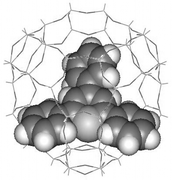Product studies and laser flash photolysis of direct and 2,4,6-triphenylpyrylium–zeolite Y photocatalyzed degradation of fenvalerate
Abstract
Direct irradiation of

* Corresponding authors
a
Departamento de Química e Instituto de Tecnología Química, Universidad Politécnica de Valencia, Apartado 22012, 46071 Valencia, Spain
E-mail:
hgarcia@itq.upv.es
b Gamaser S.L., Pedrapiquers 4-izqda, Vara de Quart, 46014-Valencia, Spain
c
Center for Catalysis Research and Innovation, Department of Chemistry, University of Ottawa, Ottawa K1N 6NJ, Canada
E-mail:
tito@photo.chem.uottawa.ca
Direct irradiation of

 Please wait while we load your content...
Something went wrong. Try again?
Please wait while we load your content...
Something went wrong. Try again?
A. Sanjuán, G. Aguirre, M. Alvaro, H. García, J. C. Scaiano, M. N. Chrétien and K. Focsaneanu, Photochem. Photobiol. Sci., 2002, 1, 955 DOI: 10.1039/B205000E
To request permission to reproduce material from this article, please go to the Copyright Clearance Center request page.
If you are an author contributing to an RSC publication, you do not need to request permission provided correct acknowledgement is given.
If you are the author of this article, you do not need to request permission to reproduce figures and diagrams provided correct acknowledgement is given. If you want to reproduce the whole article in a third-party publication (excluding your thesis/dissertation for which permission is not required) please go to the Copyright Clearance Center request page.
Read more about how to correctly acknowledge RSC content.
 Fetching data from CrossRef.
Fetching data from CrossRef.
This may take some time to load.
Loading related content
